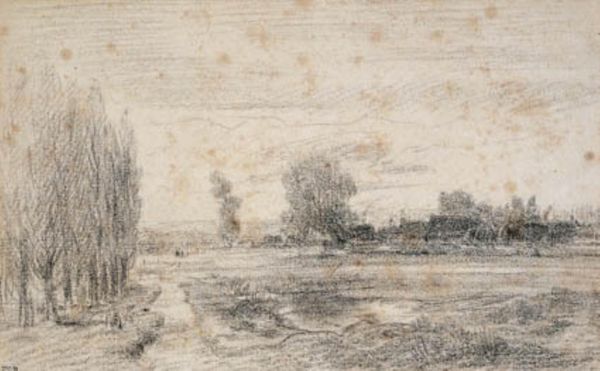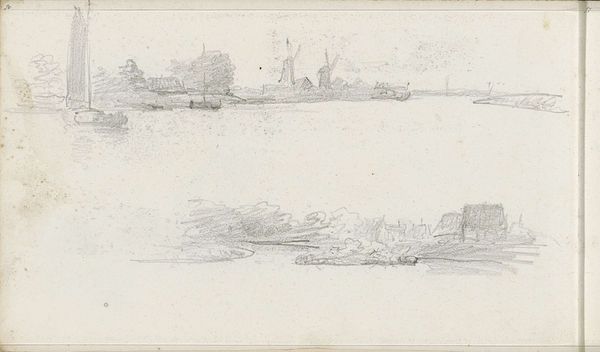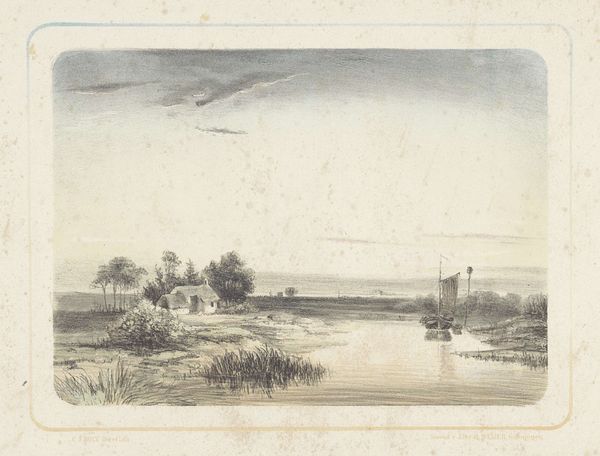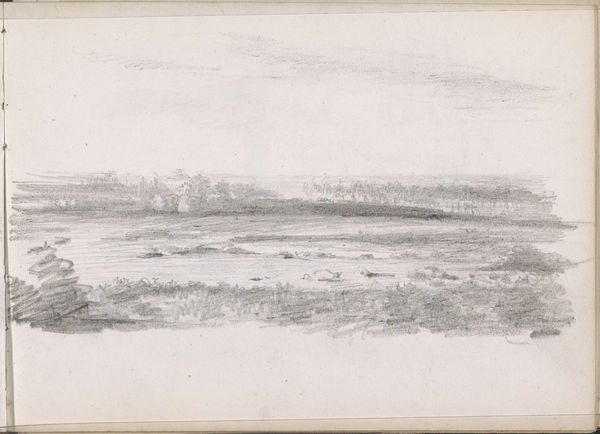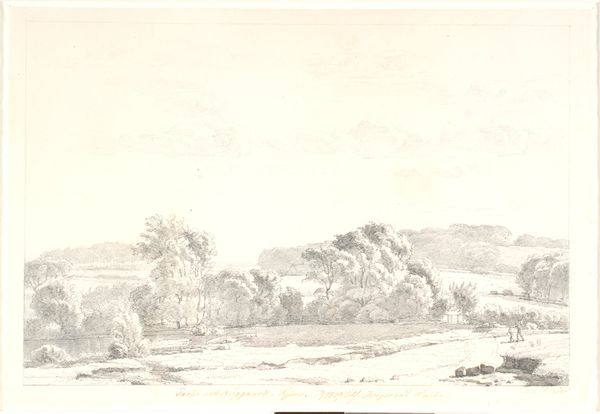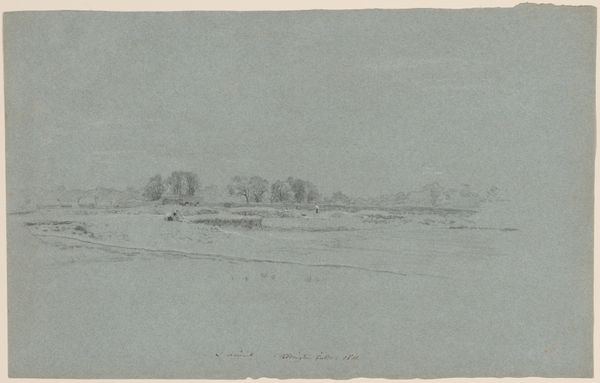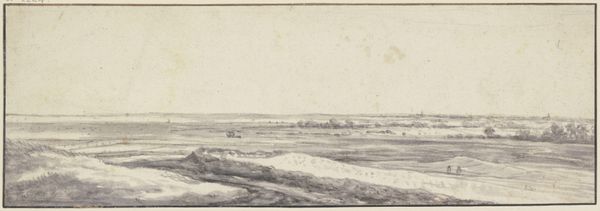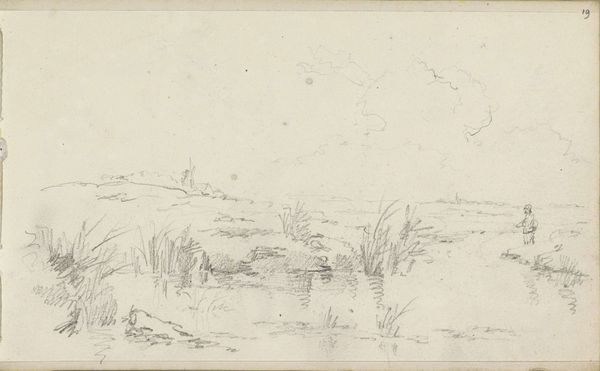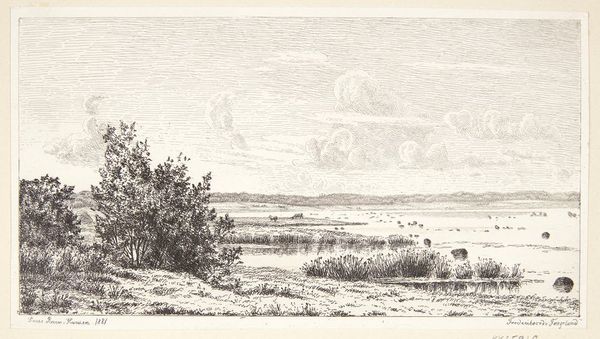
drawing
#
drawing
#
amateur sketch
#
light pencil work
#
rough brush stroke
#
incomplete sketchy
#
charcoal drawing
#
possibly oil pastel
#
oil painting
#
underpainting
#
watercolour bleed
#
watercolor
Dimensions: 261 mm (height) x 424 mm (width) (bladmaal)
Curator: Let's discuss this drawing titled "Landskab med vandhul (Berri)," or "Landscape with Watering Hole (Berri)" by Théodore Rousseau, created in 1842. It resides here at the SMK, Statens Museum for Kunst. Editor: My immediate impression is of incredible quietude, despite it being just a quick pencil sketch. It feels vast and still, like a captured breath. The simple material belies its impact. Curator: Rousseau was a significant figure in the Barbizon School, a movement that championed painting en plein air, directly from nature. This work exemplifies their dedication to capturing the transient effects of light and atmosphere in the French countryside. Think about the Salon, and how the Barbizon painters were initially rejected, later gaining acceptance. Editor: Indeed. And look at the rough handling of the pencil – it's not polished, it's immediate. This challenges our understanding of 'high art,' highlighting the artistic labor that informs more finished pieces. Is this the raw material from which those salon-approved works sprung? Curator: Precisely. Consider the socio-political context. The mid-19th century was a period of great social upheaval. Paintings of rural life, like this, tapped into a growing nostalgia for an idealized past as industrialization progressed and pushed many people to the edge. This representation served the tastes of an emerging market that favored realism as its way of idealization. Editor: Right, but how does Rousseau *make* this scene evoke those feelings? The waterhole is almost swallowed by the landscape; it doesn't dominate the scene. There's no central figure. Just earth and sky rendered with this humble material, giving voice to those shifts in perspective. The almost unfinished quality of the drawing makes it relatable, somehow. We're seeing the hand of the artist, its material reality. Curator: I agree that Rousseau's seemingly simple depiction of a natural scene is steeped in historical meaning and resonates deeply. The rise of landscape painting as a respectable genre in the 19th century mirrored changing social values and nationalistic sentiments tied to the land itself. Editor: Well, examining his artistic process certainly alters how one interprets his place in the art world, and beyond. It pushes the concept of "fine art." Curator: For me, it highlights the political and social landscape that fostered a demand for such representations. Editor: And I see a spotlight on labor and materiality, prompting a more profound consideration of what "art" can be.
Comments
No comments
Be the first to comment and join the conversation on the ultimate creative platform.
